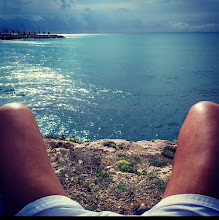sábado, 29 de marzo de 2025
LEOPOLD KUPELWIESER 1796-1862 Markt Piesting, Austria
Leopold Kupelwieser (17 October 1796, Markt Piesting – 17 November 1862, Vienna) was an Austrian painter, often associated with the Nazarene movement.
Biography
He was the son of Johann Baptist Georg Kilian Kupelwieser (1760–1813), co-owner of a factory that produced tableware.[1] His talents were recognized at an early age by the sculptor Franz Anton von Zauner and by the time he was twelve, he was already attending the Academy of Fine Arts, Vienna.[2]
During a stay in Rome in 1824, he came under the influence of Friedrich Overbeck and the Nazarene movement.[2] After the death of Alexei Sergeyevich Berezin [ru], a Russian nobleman who had been his patron there, he returned to Vienna and earned his living primarily as an illustrator and portrait painter, although he is also known to have painted shop signs.[3]
His brother was the theatrical director Joseph Kupelwieser, who wrote the libretto for Schubert's opera Fierrabras. With his brother, Joseph, he was a member of the "Schubertianer" (friends of Franz Schubert), a group that often got together for summers at the Schloss Atzenbrugg, west of Vienna. In 1826, Leopold married Maria Johanna Evangelista Augustina Stephania Theodora Lutz, an occasion which was marked by Schubert's composition, the "Kupelwieser Waltz" (never written down, but passed along by the family and later transcribed by Richard Strauss).
In 1837, he became Professor of history painting at the Academy[3] and, in 1850, was awarded the Knight's Cross of the Order of Franz Joseph. Virtually all of his later work involved religious altarpieces and frescoes. At the age of sixty he fell ill, apparently due to the rigors of painting on wet lime, and never recovered his health.[2]
Das Kaleidoskop und die Draisine, Leopold Kupelwieser’s caricature of himself and Franz Schubert for the Unsinnsgesellschaft (16 July 1818)[4]
Legacy
In 1894, a street was named in his honor and a commemorative stamp was issued in 1996. He is a character in Das Dreimäderlhaus (House of the Three Girls, 1916), a pastiche operetta, derived from the music of Schubert by Heinrich Berté, based on the novel Schwammerl (Mushroom, one of Schubert's nicknames) by Rudolf Hans Bartsch. Kupelwieser is honoured in street names in his birthplace (Kupelwieserstraße in Markt Piesting), Kupelwiesergasse in Hietzing, Vienna and in the Austrian towns of Wiener Neustadt, St. Pölten and Atzenbrugg.
www.aglutinart.blogspot.com
Suscribirse a:
Enviar comentarios (Atom)
MALTHE ENGELSTED 1852-1930 Zealand, Denmark
Malthe Odin Engelsted (nascut com a Malta Odin el 8 d'agost de 1852 a Nivågård, Sjælland - 21 de desembre de 1930 a Faxe Ladeplads) va...

-
“THE UNBEARABLE INDIFFERENCE” BY MIGUEL TADEO, NEW LGTBIQ EXHIBITION OF TRANSSEXUALIA IN CASA DE VACAS TRANSEXUALIA.ORG • JUNE 28, 2024 •...
-
Mario Moore, a Detroit native, received a BFA from the College for Creative Studies, Detroit, MI in 2009 and an MFA in Painting from the ...
-
weyrhere - weyrq nsfw X https://twitter.com › weyrhere Art! This is the NSFW account. I use AI tools and digital painting, no images ar...






























No hay comentarios:
Publicar un comentario